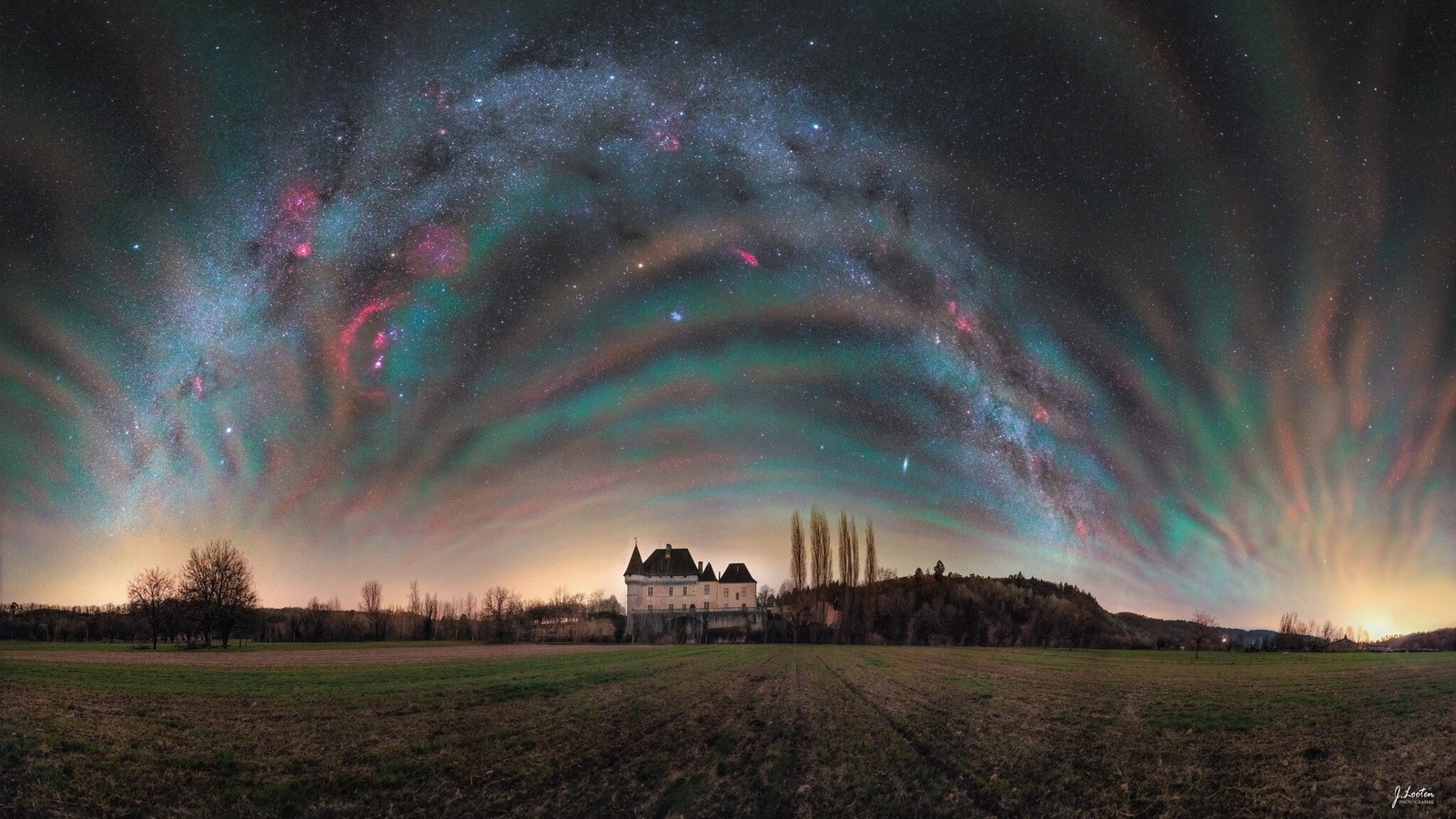Overview
NASA bewitched Instagram astrophiles with a stunning snapshot of Earth’s Airglow, captured from the vantage point of the International Space Station (ISS).
The enchanting photograph, taken on November 14, 2023, showcases Earth’s Airglow gracefully framing the planet’s horizon, with the Moon gracing the celestial scene. The ISS, orbiting 260 miles (418 km) above the midwestern United States, provided the perfect perspective for this stellar display.
In the lower right corner, the radiant city lights of Denver and its suburbs twinkle, while the bright metropolis of Chicago serves as a captivating backdrop. The image is not just a visual treat but also a testament to the intricate beauty of our planet when seen from space.

Earth’s Airglow-Image Description
In this captivating orbital night scene captured from the space station, Earth takes centre stage with the Moon hovering almost perfectly above its surface. A mesmerising yellow airglow delicately traces the contours of Earth’s atmosphere, adding a metaphysical touch to the cosmic canvas.
The surface of our planet is embellished with a constellation of city lights, each dot representing a human settlement. Notably, the luminous cluster near the horizon unmistakably identifies the iconic cityscape of Chicago.
At the same time, a radiant concentration in the bottom left corner pinpoints the sprawling metropolis of Denver. It’s a celestial spectacle that showcases the brilliance of our cities and highlights the delicate dance of light and shadow on the canvas of the night.
What is Airglow?
Airglow is the luminous phenomenon created by the excited atoms at high altitudes in Earth’s atmosphere. Although it is typically too faint for the naked eye to perceive, it becomes visible under exceptionally dark skies and is often captured by photographers.

How does it Occur?
This natural occurrence occurs when molecules, predominantly composed of nitrogen and oxygen, are stimulated by ultraviolet (UV) radiation from sunlight.
The energised atoms in the lower atmosphere release this energy through collisions, where they bump into each other and lose energy in the process. However, the upper atmosphere’s thinness reduces the likelihood of such collisions. Instead, atoms in this region release their energy by emitting photons, creating colourful Airglow.
Interestingly, certain collisions can also contribute to the formation of Airglow, with its prevalence increasing during solar maximum periods. Solar activity during these times heats the upper atmosphere, leading to a higher frequency of collisions.
This heightened collision activity, in turn, produces a distinctive greenish light. The correlation between Airglow and the solar cycle has been recognised since as far back as 1935 when Lord Rayleigh observed that airglow peaks during years surrounding solar maximum. Modern studies conducted in 2011, 2015, and 2022 have validated this link, revealing that it can be up to 40% brighter during periods of heightened solar activity.
Are Airglows the Same as that of Auroras?
In contrast to the episodic and transitory nature of auroras, Airglow is a constant presence, casting a subtle glow throughout Earth’s atmosphere and forming a delicate, luminous bubble enveloping the entire planet.
Unlike auroras, which predominantly occur near Earth’s poles, it is a pervasive phenomenon that accompanies our planet consistently.

Despite being only one-tenth as bright as the collective stars in the night sky, Airglow’s subdued radiance makes it challenging to observe without the aid of sensitive cameras, either in orbit or on the ground under clear, dark skies.
Auroras and Airglow share similar altitudes but arise from distinct physical processes.
Nighttime Airglow, also known as nightglow, is a manifestation of chemiluminescence. In this process, light is emitted through chemical interactions among oxygen, nitrogen, and other molecules in the upper atmosphere. This phenomenon is omnipresent, occurring continuously around the globe. However, nightglow is more perceptible
over a dark Earth than dayglow, given that Airglow is a
billion times fainter than the Sun.

On the other hand, Auroras originate from the interplay between solar energy and Earth’s magnetic field.
The magnetic field channels solar energy into the upper atmosphere, interacting with the same atoms involved in Airglow—primarily oxygen and nitrogen. This shared interaction is why both phenomena can produce similar colours.
The dynamic nature of Earth’s magnetic field introduces irregular movements to the solar energy, contributing to the unique visual character of each aurora event.












Comments 3